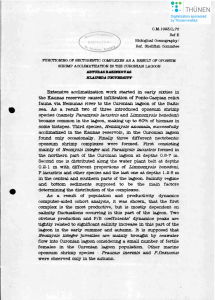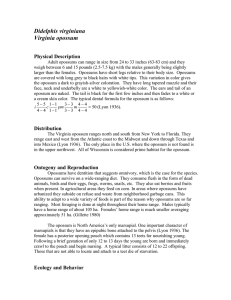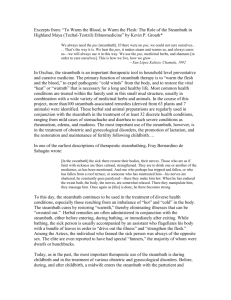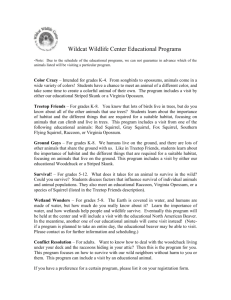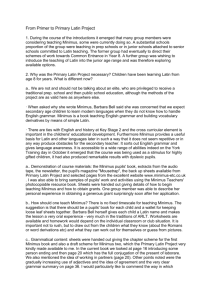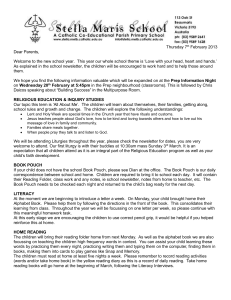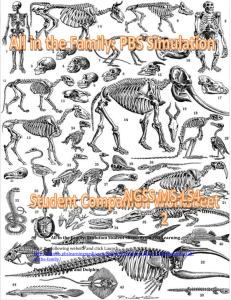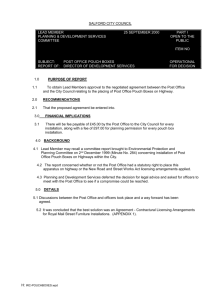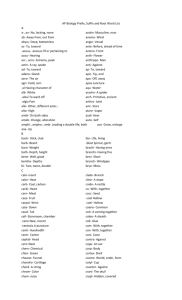Chironectes minimus
advertisement
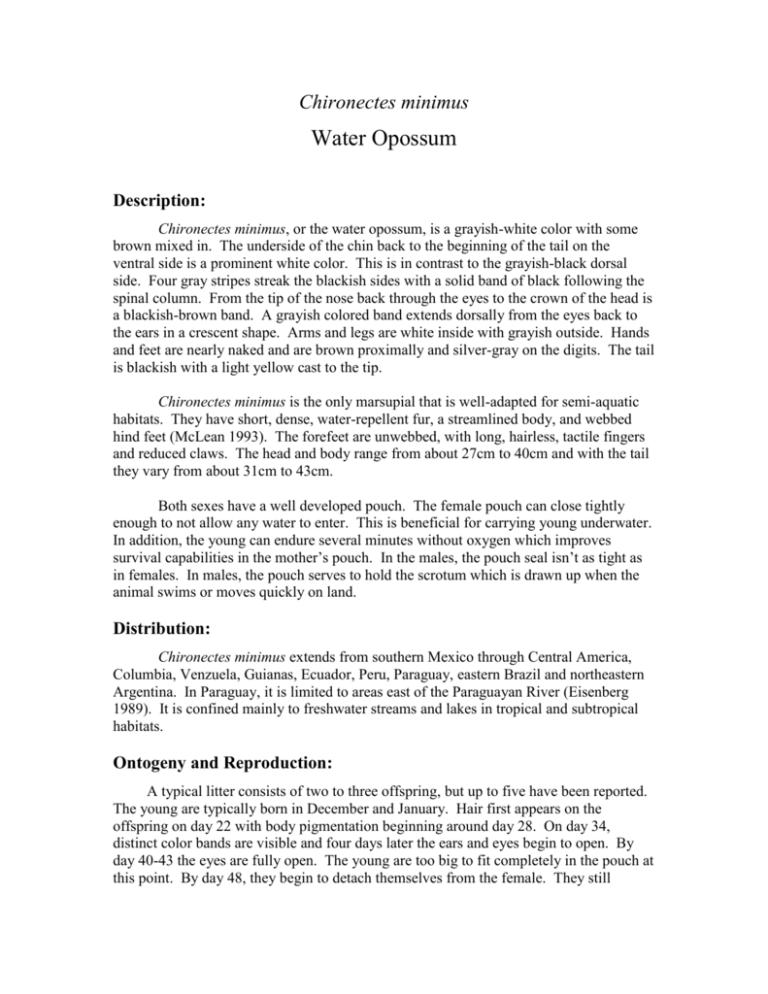
Chironectes minimus Water Opossum Description: Chironectes minimus, or the water opossum, is a grayish-white color with some brown mixed in. The underside of the chin back to the beginning of the tail on the ventral side is a prominent white color. This is in contrast to the grayish-black dorsal side. Four gray stripes streak the blackish sides with a solid band of black following the spinal column. From the tip of the nose back through the eyes to the crown of the head is a blackish-brown band. A grayish colored band extends dorsally from the eyes back to the ears in a crescent shape. Arms and legs are white inside with grayish outside. Hands and feet are nearly naked and are brown proximally and silver-gray on the digits. The tail is blackish with a light yellow cast to the tip. Chironectes minimus is the only marsupial that is well-adapted for semi-aquatic habitats. They have short, dense, water-repellent fur, a streamlined body, and webbed hind feet (McLean 1993). The forefeet are unwebbed, with long, hairless, tactile fingers and reduced claws. The head and body range from about 27cm to 40cm and with the tail they vary from about 31cm to 43cm. Both sexes have a well developed pouch. The female pouch can close tightly enough to not allow any water to enter. This is beneficial for carrying young underwater. In addition, the young can endure several minutes without oxygen which improves survival capabilities in the mother’s pouch. In the males, the pouch seal isn’t as tight as in females. In males, the pouch serves to hold the scrotum which is drawn up when the animal swims or moves quickly on land. Distribution: Chironectes minimus extends from southern Mexico through Central America, Columbia, Venzuela, Guianas, Ecuador, Peru, Paraguay, eastern Brazil and northeastern Argentina. In Paraguay, it is limited to areas east of the Paraguayan River (Eisenberg 1989). It is confined mainly to freshwater streams and lakes in tropical and subtropical habitats. Ontogeny and Reproduction: A typical litter consists of two to three offspring, but up to five have been reported. The young are typically born in December and January. Hair first appears on the offspring on day 22 with body pigmentation beginning around day 28. On day 34, distinct color bands are visible and four days later the ears and eyes begin to open. By day 40-43 the eyes are fully open. The young are too big to fit completely in the pouch at this point. By day 48, they begin to detach themselves from the female. They still continue to go to the pouch to suckle and sleep beside her head or body, generally remaining very close (Rosenthal 1975). Precopulatory behavior includes close association between the male and the female. The male circles or follows the female and then pulls the female towards him as he mounts her. Ecology and Behavior: The water opossum dens in a cavity that is usually accessed through an entrance directly above the water line of a stream. Excavation of a stream den showed an entrance about 10 cm in diameter, just above water level, followed by a tunnel extending about 0.6 m at a 45 degree angle. The end of the tunnel was a somewhat enlarged nest chamber (Marshall 1978). The water opossum was never observed defecating in their dens, although they made no effort to remove soiled nesting material. During the day the water opossum, if inactive, nests in dark areas of the forest in nests made of leaves or other readily available material. They have easily accessible escape routes at these nests in case an unwanted intruder approaches. The water opossum is known to be active during the day and at night. It was once thought to be nocturnal, but further research has shown water opossum activity during all times of the day. Chironectes minimus are freshwater stream predators. They prefer aquatic prey such as crayfish, shrimp, fish, frogs, and insects. In captivity, water opossums have been given a horsemeat/mink chow mix and smelt and they prefer the fish (Rosenthal 1974). They locate food in the water by searching with their forefeet, which are held in front of them while they are swimming. Water opossums are known to be voracious feeders and adults show agonistic behavior while feeding. Water opossums, for the most part, are antisocial and solitary. It is thought to be a rare animal in the wild but this fact lacks hard scientific evidence. Since the water opossum lives in remote and hard to reach areas, it is hard to know the true population of this animal. Literature Cited: Eisenberg J.F., Kent H. Redford. 1989. Chironectes minimus (Zimmerman, 1780) Yapok, Water Opossum, Cuica de Agua. Mammals of the Neotropics – The Southern Cone 2: 18. Gonzalez. 1998. First record of Chironectes minimus (Mammalia, Didelphidae) in Uruguay. Communicaciones zoologicas del Museo de Natural de Montevideo 12(192): 2. McLean. 1993. A first record of the water opossum (Chironectes minimus) from Guatemala. The Southwestern Naturalist 38(4): 402. Marshall L. 1978. Chironectes minimus. Mammalian Species 109(109): 1. Rosenthal. 1975. Observations on the water opossum or yapok (Chironectes minimus) in captivity. International Zoo Yearbook 15: 4. Reference written by Ross Crandall, Biol 37: Edited by Kim Moore. Page last updated 12-15-04..

